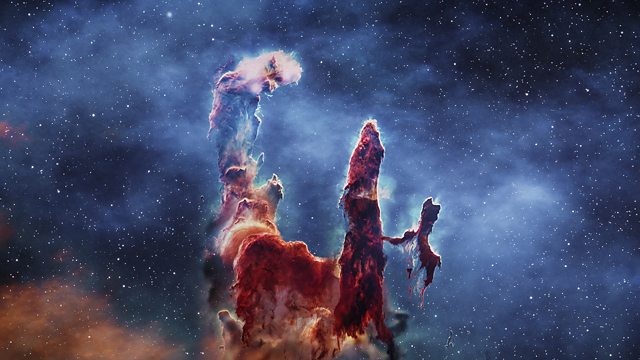A space mission discovers the dramatic history of the Milky Way. Professor Brian Cox reveals how our galaxy endured multiple collisions as rival galaxies fought for survival.
Professor Brian Cox continues his epic exploration of the cosmos by looking at the faint band of light that sweeps across the night sky - our own galaxy, the Milky Way. The Sun is just one of almost 400 billion stars that form this vast, majestic disk of light, our own home in the universe. We鈥檝e longed to understand our galaxy鈥檚 secrets since the time of the ancient Greeks, yet it鈥檚 only very recently, thanks to a cutting-edge space telescope, that we鈥檙e finally able to reveal the Milky Way鈥檚 dramatic history and predict its cataclysmic future.
One mission more than any other has deepened our understanding of the galaxy, the European Space Agency鈥檚 Gaia Space Telescope. It painstakingly measures the true position of over a billion stars, producing the most accurate map of our galaxy ever created. But more than mapping stars, Gaia also measures their movement, allowing us to track their positions back through time - to rewind the history of the Milky Way. It has created a new kind of science: galactic archaeology.
Our galaxy started to form shortly after the Big Bang around 13.6 billion years ago. It started out a fraction of the size it is today, and Gaia has revealed how it grew over the eons. Beautifully rendered VFX based on the very latest Gaia data has uncovered the remarkable story of our galaxy鈥檚 evolution. As our young galaxy encountered rival galaxies, it experienced a series of violent growth spurts and intense periods of cataclysmic change while battling to survive.
Over billions of years, our Milky Way cannibalised neighbouring galaxies, adding countless new stars and triggering great epochs of creation. Brian reveals we may even owe our own existence to one of these galactic collisions. Each time our galaxy feeds, a new era of star formation begins, fuelled by incoming torrents of fresh gas and energy. The latest evidence suggests that our own star was possibly born in one such event.
We may be small compared to the universe, but we are the consequence of grand events, and there is another collision to come. Another, larger galaxy is coming our way. Andromeda is heading straight for us at a quarter of a million miles per hour. The Milky Way鈥檚 long-term fate is in the balance.
Last on
More episodes
Music Played
-
![]()
Juf Roos
In De Maneschijn
-
![]()
Uwe Kr枚ger
Tauch Hinab Ins Dunkel
-
![]()
Amazing Karaoke
Titanium
Broadcasts
- Wed 10 Nov 2021 21:00
- Sat 13 Nov 2021 19:00
- Wed 24 Nov 2021 00:05麻豆官网首页入口 Two except Northern Ireland & Northern Ireland HD
- Sat 4 Mar 2023 19:40
- Wed 27 Sep 2023 20:00
Download an Open University poster and discover more about the Universe
Journey through The Universe and discover more about galaxies, stars and planets.


